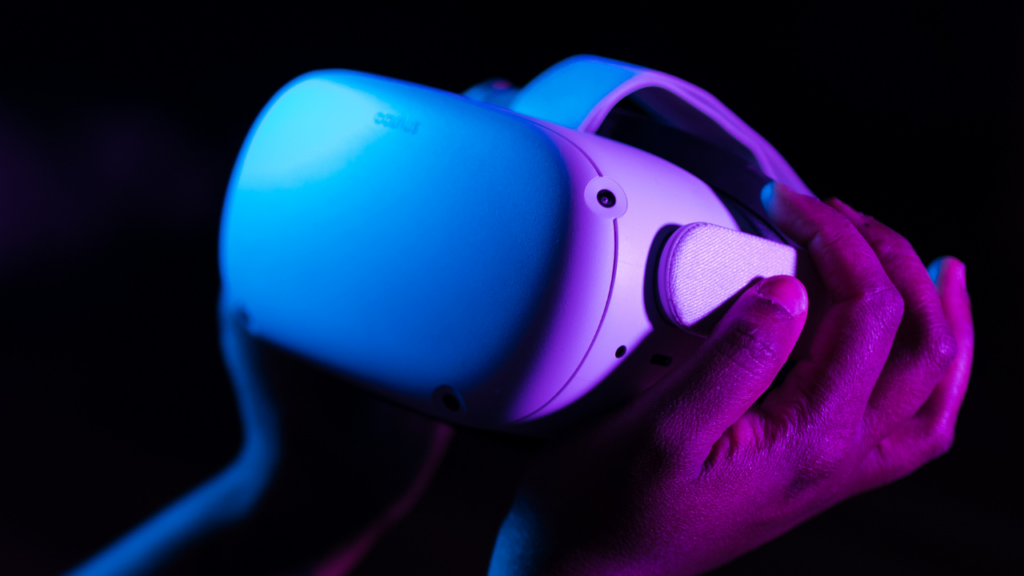With Apple’s Vision Pro set to launch on February 2, the company has started letting select journalists try it out (with much hand-holding) in hopes of eliciting rave reviews that will help drive sales of the $3,500 augmented and virtual reality device.

Not since the launch of the iPhone has Apple made such a radical gamble to create a new device category. And like the iPhone, the Vision Pro builds on years of work by Google, HP, HTC, Meta, Microsoft, Pimax, Samsung, Sony, and Valve to create VR experiences for consumer and professional environments. And recall that Apple has framed its Vision Pro as a “spatial computing” device, leaning into the idea that it’s more similar to a wearable laptop computer than a gaming or video entertainment device – although it ventures to offer those features as well, and better than others have in the past.
Key to Apple’s, uh… vision… is the 4K-per-eye resolution that creates intensely real scenes fueled by 23 million pixels, along with a focus on “awareness” of the surrounding environment when preferred by the user. Anyone who wants to shut out the outside world can still do so, but the option to stay tethered to reality while still immersed in various apps remains somewhat unique to the Vision Pro even as Meta and others start to incorporate similar features. It’s perhaps unfair to give Apple too much credit, however. Sony, Meta, and other companies might have broken similar ground had they been willing to price devices so high. But other companies, unlike Apple, can’t rely on a rabid core fanbase to buy anything they put out. Apple can. Still, the company remains cautious, reportedly manufacturing only between 60,000 and 80,000 units at launch. That’s practically nothing, and it suggests Apple remains realistic about its first generation. Right now, the Vision Pro – to be frank – isn’t a must-have device. It doesn’t necessarily solve a problem. It’s just cool. And that’s enough for many – but apparently not millions, at least according to Apple’s internal planners.
It’s an interesting question to ponder whether the Vision Pro will end up more a computer or an entertainment device. It can do both. But what will become the “killer app” that makes the second- or third-generation device a must-have for consumers in the future? On the media side, the Vision Pro will launch with more than 150 3D movies from multiple studios, including Disney’s “Avatar: The Way of Water” and “Avengers: Endgame,” in part thanks to a partnership announced in June for a device Disney CEO Bob Iger called “a revolutionary platform” in Apple’s launch press release this week. He may be right, although Apple may face some adoption challenges. Most of the media reviews this week praised the experience but noted that set-up required much trial and error, and that’s with an Apple expert helping every step of the way. This is why Apple is offering extensive demos at its stores for new Vision Pro buyers (although it’s not mandatory). One common complaint is visor weight, as well as issues fitting it snugly enough to avoid light bleed. These are the kinds of early issues that could sour opinions if not outweighed by insanely positive reviews of the experience itself.
Next? Disney, Amazon, Warner Bros. Discovery, and Paramount Global have all jumped in early with apps for the Vision Pro, but other major content players like Google’s YouTube, Netflix, and music app Spotify are taking a more wait-and-see approach (Vision Pro users can still access those services through a standard web browser). However, the rest of the media world may not wait too long to unleash the Content Kraken. After all, once reviewers got past questions of whether the spatial aspect of computing adds any real utility, most remained relatively glowing about the video entertainment aspect and acknowledged that the dual 4K display creates an insanely vivid experience. “Using the Vision Pro, it strikes me that Apple has done a truly excellent job approximating distances and points in space,” noted Techcrunch reviewer Brian Heater. “Watching a movie on Vision Pro feels like watching a movie projected large on the wall in front of you.” So while Apple may be dead set on marketing the Vision Pro as a spatial computing device, consumers may end up using it more as a standard entertainment console focused on video content or gaming, largely because of the 100-inch-screen feel that even at $3,500 remains cheaper (and less intrusive) than buying a real 100-inch TV set. It’s an IMAX experience at home. Throw in immersive, 360-degree gaming with incredible resolution, and Apple could find that spatial computing becomes less of a marketing focus over time. If that becomes reality, expect Hollywood and the gaming companies to converge within the next couple of years (and competitors to offer their own high-end VR devices). If not, this $3,500 gamble could go bust. But for a company the size of Apple, what it will learn about consumer behavior could more than make up for its investment. There’s always the next thing, after all.
